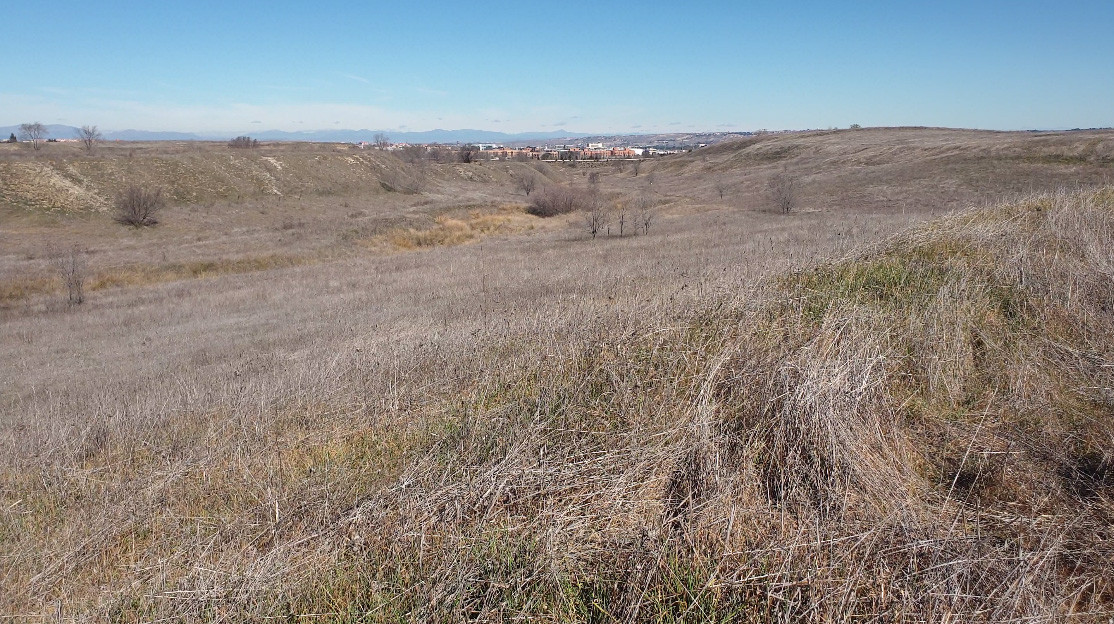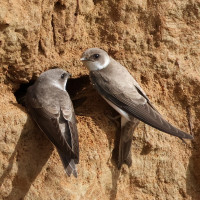Description
The Lagunas de Ambroz have an area of 678 hectares. It is an area with a richness in substrates, which has allowed the appearance of a remarkable variety of flora associated with it, which supports a very interesting amount of fauna that, despite the state of abandonment and mistreatment in which the environment currently finds itself, is one of the hotspots of biodiversity within the city of Madrid. Already more than 155 different species of birds have been recorded. Among the birds that can be seen are Küçük batağan, Bahri, İbibik, Arıkuşu, Ak kuyruksallayan, Tepeli toygar, Kum kırlangıcı, Kaşıkgaga, Macar ördeği, Elmabaş patka, Pasbaş Patka, Kızıl Keklik, Leylek, Kara akbaba, Küçük kartal, Kızıl Çaylak, Puhu, Maskeli Ötleğen and Keşiş Papağanı.
_________________________
Espagnol: Un reservorio de vida único dentro del municipio de Madrid, en zona periurbana deshabitada, con lagunas procedentes del abandono de actividad minera. El entorno de las Lagunas de Ambroz tiene una superficie de 678 Ha., es un entorno que debe ser protegido y preservado. Se trata de un área con una peculiaridad y riqueza en sustratos muy particular, que ha permitido que asociada a la misma se produzca la aparición de una notable variedad de flora, que sostiene a una interesantísima cantidad de fauna que, a pesar del estado de abandono y maltrato en el que actualmente se encuentra el entorno, es uno de los puntos más calientes de biodiversidad dentro de la ciudad de Madrid.El Grupo de trabajo para la restauración, conservación y protección de Las Lagunas de Ambroz y todo su entorno, formado por Asociaciones y profesionales de reconocido prestigio, ha elaborado el Informe de Biodiversidad 2020-2022, en el cual explican con sumo detalle todas las particularidades de este entorno. En este Informe se describe la observación de 155 especies diferentes de aves. Ver el enlace web a continuación.
Details
Access
Access by the road that runs perpendicular to the Avenida de Canillejas to Vicálvaro. Caution must be taken because in this access there is a minor industrial area with the transfer of lorries. Bus: EMT lines no. 4, 106 and 159. EMT stop numbers: stop 4613 and stop 4612 (one for each direction).
Metro: the closest is "Avenida de Guadalajara". You can walk along Avda. de Canillejas to Vicálvaro in the direction of M-40, turn onto Calle Versalles, and then cross M-40 via an elevated pedestrian walkway, accessing the Parque de la Cuña Verde de Vicálvaro (zone C). From this park, walk east (again towards Avda. de Canillejas a Vicálvaro), from which you can see the entrance to Camino de Ambroz.
By car: parking in the Parque de la Cuña Verde de Vicálvaro (zone C). From there (it is a small car park) you can see the entrance to the Camino de Ambroz.
IMPORTANT NOTICE: the area can be accessed freely, however, the lagoon area (abandoned mining extraction area) is fenced and access is prohibited. It is a dangerous place. NOTE: in this area there are protected and endangered species. You must have the utmost respect so as not to alter this ecosystem.
_________________________
Espagnol: Acceso al lugar por el Camino de Ambroz, en el término municipal de Madrid, distrito San Blas - Canillejas, camino que sale perpendicular a la Avenida de Canillejas a Vicálvaro. Ha de tenerse precaución porque en este acceso hay una zona industrial menor (empresa contenedores, almacén materiales construcción...) con trasiego de camiones.
Autobús: líneas EMT nº 4, 106 y 159. Números de parada de EMT: parada 4613 y parada 4612 (una por cada sentido).
Metro: el más cercano es "Avenida de Guadalajara". Se puede caminar por la Avda. de Canillejas a Vicálvaro en dirección a M-40, se gira por calle Versalles, y después atravesar M-40 por una pasarela peatonal elevada, accediendo al Parque de la Cuña Verde de Vicálvaro (zona C). Desde este parque, se camina en dirección este (otra vez hacia la Avda. de Canillejas a Vicálvaro), desde la cual se ve la entrada al Camino de Ambroz.
Vehículo privado: parking en el Parque de la Cuña Verde de Vicálvaro (zona C). Desde ahí mismo (es un parking pequeño) se ve la entrada del Camino de Ambroz.
AVISO IMPORTANTE: se puede acceder a la zona libremente, sin embargo, el recinto de las lagunas (zona de extracción minera abandonada) está vallado y está prohibido el paso. Es un lugar peligroso.
NOTA: en esta zona hay especies protegidas y en peligro de extinción. Se debe tener el máximo respeto para no alterar este ecosistema.
Terrain and Habitat
Wetland , Scattered trees and bushesConditions
No shadow , Open landscape , FlatCircular trail
YesIs a telescope useful?
Can be usefulGood birding season
All year roundBest time to visit
Spring migration , Autumn migrationRoute
Unpaved roadDifficulty walking trail
EasyAccessible by
Foot , BicycleBirdwatching hide / platform
NoExtra info
This Laguna de Ambroz and its surroundings have unique values within the city of Madrid, the largest lagoon that exists in it. In this way, the Lagunas de Ambroz and its surroundings become a space of special interest that supports populations of flora and fauna of great value. It is a place with the potential to house a much greater number and quantity of species than the current one, putting it on a par with the most biodiverse spaces in the Madrid region.
_________________________
Espagnol: Esta Laguna de Ambroz y su entorno poseen valores únicos dentro de la ciudad de Madrid, la mayor laguna que existe en la misma, la cual posee, además, una singularidad geológica e hidrogeológica muy particular. De esta manera, las Lagunas de Ambroz y su entorno se convierten en un espacio de interés especial que soporta poblaciones de flora y fauna de gran valor. Es un lugar con potencialidad para albergar un número y cantidad de especies mucho mayor que el actual, poniéndole a la altura de los espacios más biodiversos de la región de Madrid.
Links
- Información Plataforma Salvar las Lagunas de Ambroz
- Lista eBird Lagunas de Ambroz
- Link descarga Informe Biodiversidad Lagunas de Ambroz





